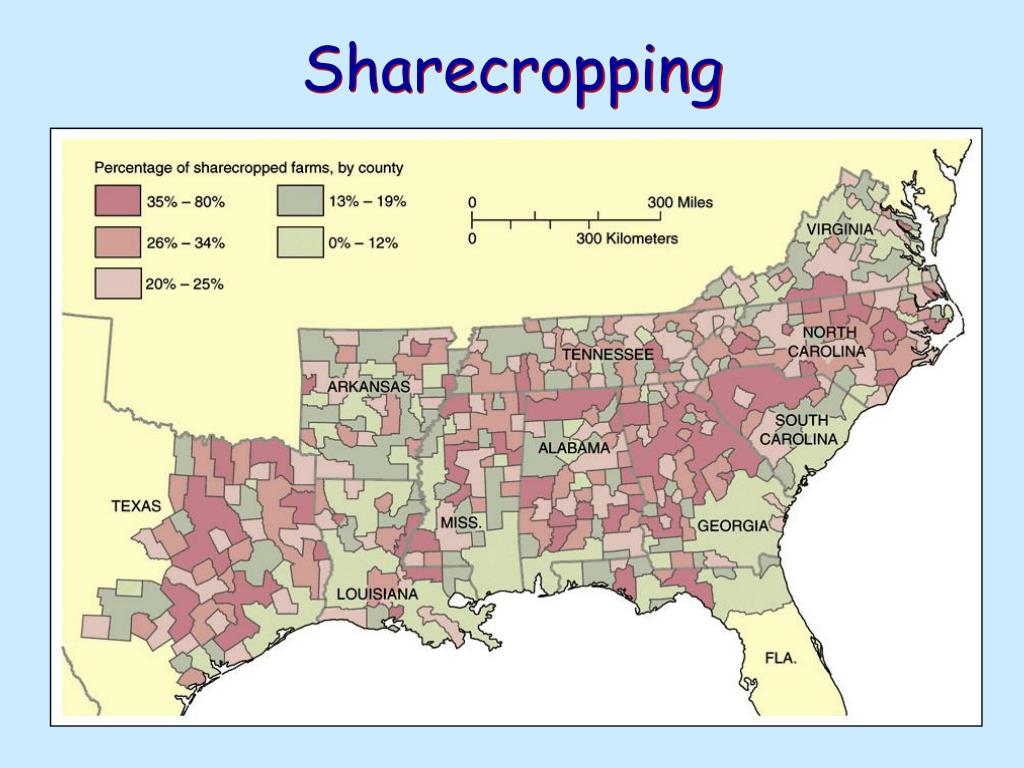
#A similarity between slavery and sharecropping was that how to#
This final discussion centers on a contextual analysis of a shaʿbi song by Abdelaziz Stati, which is understood as providing a moral map for its listeners on what it means to be a “real man” and how to enact it.

Chapter three concludes by juxtaposing migrants’ conception of manhood, and their own notion of what it means to be a “real man” (rajəl), which is indivisible from the notion of l-ʿarubi. The historical discussion is aimed at locating their difference in reference to how the manhood of these migrants has been problematically constructed and fetishized. From there, the chapter traces how a collective trauma, caused by an earlier colonial encounter between the French Expeditionary Corps and the Italian population at the end of World War II, has profoundly influenced the image and perception of migrant Moroccan men in Italy. My focus on diverse examples of servile exploitation also necessarily implies the illumination of helotage by means of difference as well as by similarity.This chapter begins with a discussion of terms that incarnate difference, terms that, directly or indirectly, migrant Moroccan men acknowledge, must engage with and react to. It also differs in scope from the approach adopted in many previous comparative studies by historians of ancient slavery, certainly in those focused upon agrarian labour, which have most frequently restricted their comparisons to ancient chattel-slave systems judged to have operated modes of exploitation directly comparable with the slave systems of the modern New World. The scope of my approach, consequently, differs from the kind of cross-cultural comparison currently most favoured by anthropologists: namely, comparison within a region or culture area. On occasion, where there is a sufficient degree of similarity to conditions in another servile system, those correspondences will be used to supplement the exiguous ancient evidence by developing, with all due caution, plausible hypotheses regarding the character of helot servitude. The patterns and conclusions indicated, both positively and negatively, by comparative study of these variables will be used as context for assessing the limited and partial ancient literary and archaeological evidence, for drawing out implications, and for suggesting fresh insights into the nature of Spartiate-helot agrarian relations. My study will focus upon certain key variables which have been shown to possess widespread significance for the character of social relations of production across these different types and systems of agrarian labour. My paper is, rather, a points, to contemporary servile populations from Greek antiquity, especially the Penestai of Thessaly and on occasion to certain systems of dependent agrarian labour in which the exploited labour force is legally free. I shall not attempt to provide a definitive location of helotage within the wide range of unfree statuses in world history. I should emphasise that the writing of this paper falls at an early stage of my comparative research.

In this paper I shall explore some ways in which the operation of helotage may be profitably studied against the backdrop of systems of unfree labour in other historical times and places from antiquity to the modern world. My project is designed to develop such a comparative approach one stage further by viewing Spartan customs and institutions in the context of comparable practices in societies beyond the ancient Greek world. For the study of helotage, the value of examining Spartan institutions in broader Greek context is amply demonstrated by the paper in this volume by Hans van Wees. In recent years my work has increasingly been concerned to deconstruct that image as it relates to Greek antiquity, to explore the complex manner in which Spartan institutions and practices were frequently both distinctive and yet reflected, and sometimes even exemplified, trends observable elsewhere in the Greek world.


Modern thought has often followed ancient Greek and Roman sources in portraying Sparta as an exceptional society, somewhat different from other Greek poleis, and indeed from most other civilised human societies. This paper is a first step in a project designed to study Sparta in comparative historical perspective, ancient to modern.


 0 kommentar(er)
0 kommentar(er)
